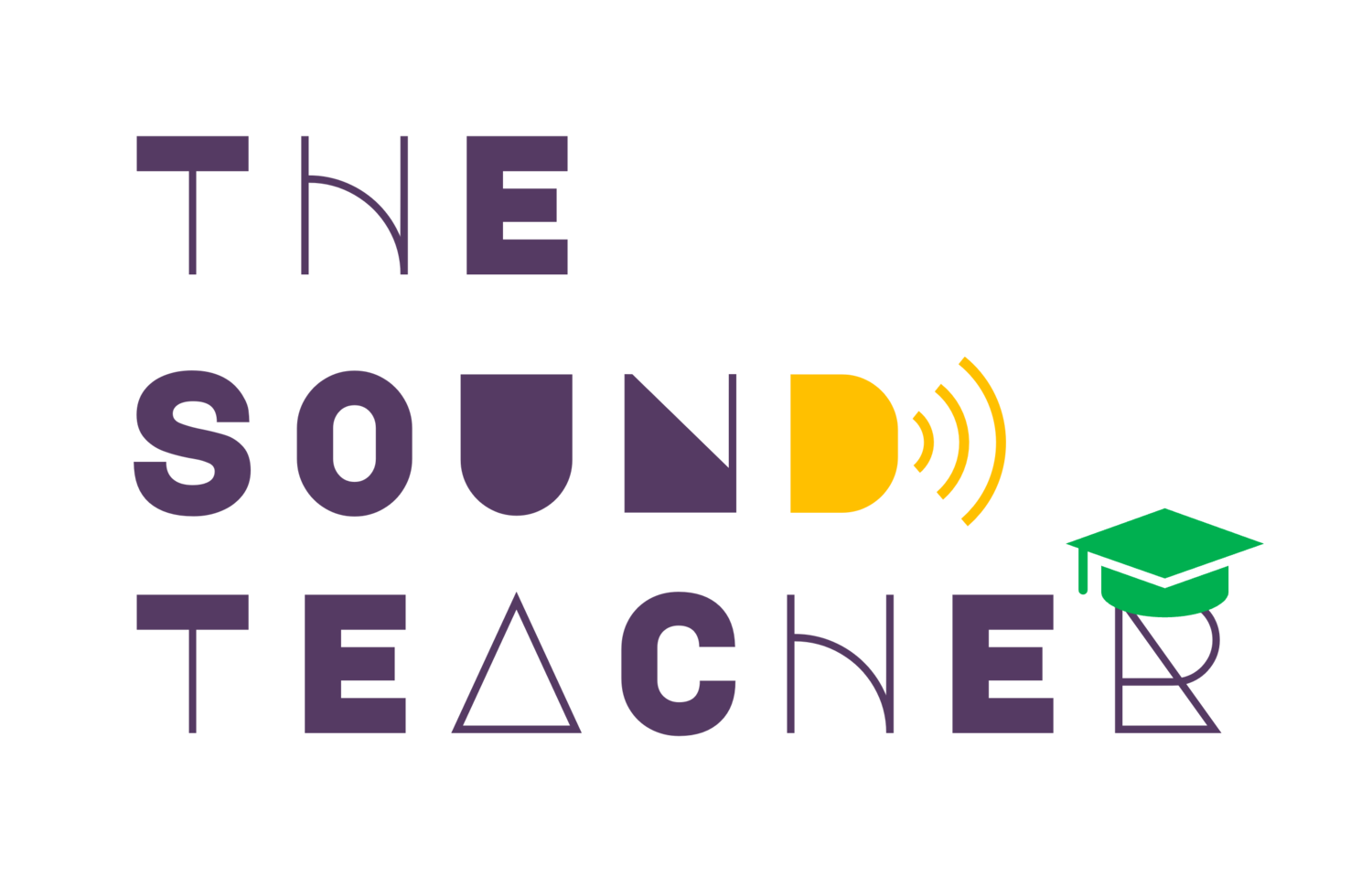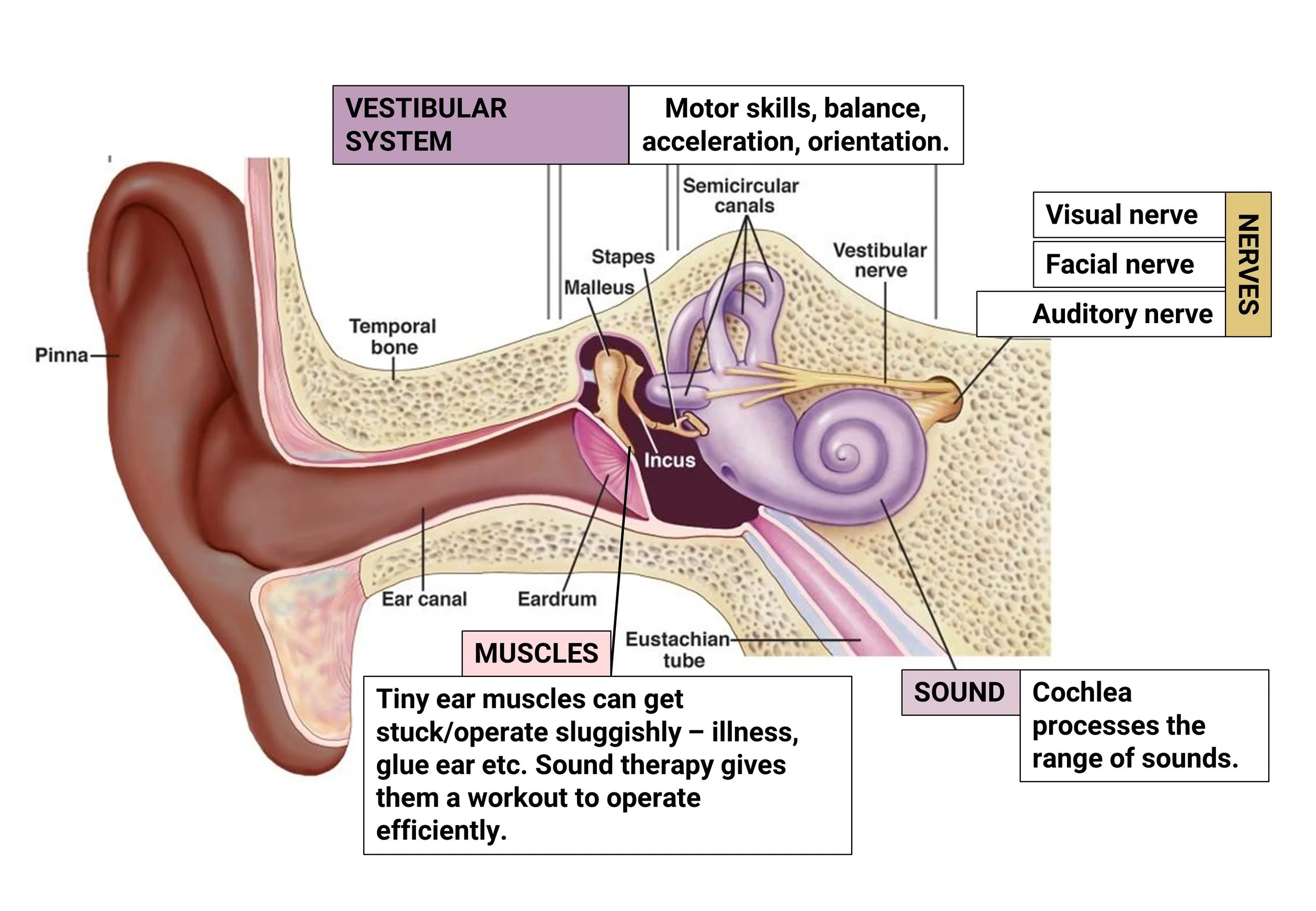How hearing works
Written content inspired by the Huberman Lab Essentials podcast Protect & Improve Your Hearing & Brain Health (October 13th, 2025) by Andrew Huberman, Ph.D*
Most of us don’t think about our hearing often enough. However, many people use headphones, play audio loudly, or live in noisy surroundings.
Hearing loss affects 1.5 billion people globally and disables half a billion of them. It is expected to impact another billion by 2050. Despite this, it is often underestimated and stigmatised.
Journey of sound to the brain
Credit: National Institutes of Health (NIH)
Hearing occurs when sound waves travel through the ear canal, vibrating the eardrum (tympanic membrane).
This movement activates three tiny bones — the hammer, anvil, and stirrup* — which then move fluid in the inner ear.
There, sensitive hair cells detect these vibrations, triggering electrical signals that travel via the auditory nerve to the brain.
This process, called mechanoelectrical transduction, converts mechanical sound into electrical impulses.
* Latin names malleus, incus, stapes
Types of hearing loss
Hearing loss generally falls into two main types: conductive and sensorineural.
Conductive hearing loss
This is when sound is blocked from reaching the inner ear, often due to eardrum damage, fluid, or stiff hearing bones. It is usually treatable with surgery or hearing aids and is easier to manage than other hearing loss types.
Sensorineural hearing loss
The most common type. It stems from the cochlea in the inner ear, which is difficult to study because it is a tiny organ hidden deep within the densest bone of the skull.
How small? Fun facts.
You may already know that the ear bones are the smallest bones in the human body. Here are some fun facts about the ear and hearing.
Sound vibrations
Sound vibrations vary with frequency and intensity.
Frequency
Humans can hear tones up to 20,000 Hz, but clinical hearing tests usually cover only up to 8,000 Hz since speech mainly falls between 250 and 4,000 Hz.
Image source: DiegoSLP
The cochlea, a coiled inner ear organ, encodes high frequencies near its base and low frequencies further away at the apex. Notably, the cochlea’s high-frequency region is more vulnerable to damage from noise, drugs, and ageing.
Intensity
Conversational speech measures about 60 decibels, while airplane cabins reach 80 decibels. Motorcycles produce around 100 decibels, concerts range from 110 to 120, and jet engines hit 140 decibels. The loudest recorded noise in a football stadium was 142 decibels in Kansas City, which is deafening!
Image source: Revolution Hearing
“Ringing in the ears after concerts was once seen as temporary, but now it’s known that some damage can be permanent, causing hidden hearing loss.”
Sound waves
Did you know over 80% of the stimulation the brain receives comes from the ear? The ear acts as a "dynamo" that provides the brain with energy.
It is sound waves - not voices or music directly - that travel through space and reach the ear. These waves are transformed into mechanical pressure, which then triggers neuronal signals sent to the brain. Remarkably, humans can distinguish language and music, as well as differentiate a cry from laughter. This process occurs extremely quickly.
Sounds and emotions
Hearing plays a key role in communication, emotional well-being, relationships, and mental health.
The brain has developed to process and interpret sensory information, with sound being a key sensory input.
Sound plays a vital role in emotional health. The auditory pathways are closely connected to the emotional centres of the brain, particularly the limbic system.
This connection explains why music can deeply affect us and why powerful speeches by influential leaders can inspire and energise people.
The relationship between hearing and emotion is well recognised and significant.
The emotional component of hearing may also result in difficulties, especially for those with tinnitus. Hyperacusis, often linked to hearing loss, makes loud sounds uncomfortable or painful. Phonophobia, a rare fear of sounds, is usually related to mental health conditions like obsessive-compulsive disorder or post-traumatic stress.
“The tone of a person’s voice can leave a lasting impression, whether positive or negative, making their words memorable and difficult to forget.”
How the Tomatis® Method can help
Our brain processes vast neural signals, mostly from the ear. The Tomatis® Method retrains the brain using auditory stimulation to sync ears and brain. Developed by French ENT doctor Alfred Tomatis, it uses special music and headphones with Gating® technology, combining neuroscience and neuroplasticity concepts.
It is not possible to recuperate hearing thresholds with Tomatis® auditory stimulation, but it can help with memory, attention, concentration, localization of sounds and sound discrimination. It can also be very effective for learning to use and accept hearing aids or assistive listening devices in the case of hearing loss.
*Andrew Huberman, Ph.D is a professor of neurobiology an ophthalmology at Stanford School of Medicine.








